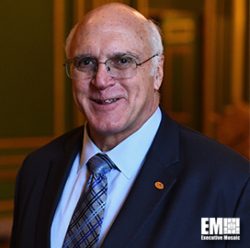Executive Biz spoke with Tommy Gardner, chief technology officer, about HP Federal’s role driving information technology modernization and cybersecurity enhancements.

“One of the largest (and often overlooked) risks facing the federal government is an unsecured printer … From a security perspective, whether it’s documents left in the printer tray or a default password that has not been changed, leaving endpoint devices unprotected can have dire implications.â€
ExecutiveBiz: You joined HP Inc. in July 2017. In the nine months of being with HP Inc. how has the transition into the company gone? Would you like to share your initial observations?
Tommy Gardner: I’ve been impressed with the talent and dedication of the employees at HP, who are the best of the best and always striving towards continuous improvement. Most of the people I work with have been at the company for over 20 years and I love the diverse group of experts we have assembled. There is true strength in this type of diversity.
ExecutizeBiz: Both the public and private sectors are undergoing a digital transformation. What do you believe are the biggest hurdles the federal government faces in embracing digital transformation?
Tommy Gardner: It sounds simple, but many government agencies are still thinking of printers as back-office machines for printing documents when needed. Aside from ink replacements, toner refills and paper jams, printers need little maintenance. With that in mind, government officials need to take advantage of these internet-connected, digitally-enabled and capability-rich machines to help protect their network and drive operational efficiencies across their organization. One way to bridge this gap is through managed printer services to help secure and optimize printers and alleviate the burden on government IT. For example, MPS can provide analytic resources that help institutions proactively identify printers that need to be repaired soon.
ExecutiveBiz: What are the greatest cybersecurity risks the federal government faces today?
Tommy Gardner: One of the largest (and often overlooked) risks facing the federal government is an unsecured printer. According to the 2017 year-end report from the Identity Theft Resource Center, more than 5.8 million records were compromised from the government and military. From a security perspective, whether it’s documents left in the printer tray or a default password that has not been changed, leaving endpoint devices unprotected can have dire implications. Federal institutions should seriously evaluate the impact of security breaches and take a holistic view of their networks and the end points within them to best protect themselves.
ExecutiveBiz: In terms of cyber and data security are there any new technologies that you are watching closely?
Tommy Gardner: As part of my role at HP, I spend about 10 percent of my time brainstorming new projects that can help bring HP into new areas, such as blockchain, AI, machine learning, neural networks and quantum key distribution. More broadly, HP has identified four megatrends: rapid urbanization, changing demographics, hyper globalization, and accelerated innovation, which we monitor closely.
ExecutiveBiz: In what areas do you see the greatest public-private IT collaboration?
Tommy Gardner: The private sector is a great blueprint for how the public sector needs to think about IT from a procurement perspective. For many, computers and printers are often looked at as commodities, because from a form factor perspective they look similar. However, the internals aren’t designed the same; there are different levels of cyber protection in each brand. In both sectors IT decision-makers should invest in the best security that money can buy. “Good enough†cybersecurity can have serious consequences for the government agency and the public. The greatest collaboration we see between the sectors is in sharing knowledge about cyber threats.
###

Before joining HP Federal as chief technology officer, Tommy Gardner was the CTO of Jacobs Engineering, Scitor and ManTech, and was a senior technical executive at Raytheon. Gardner also served as the chief of Naval Research’s deputy for science and technology, and commanded the nuclear submarine, USS San Juan (SSN 751).
Read more:




